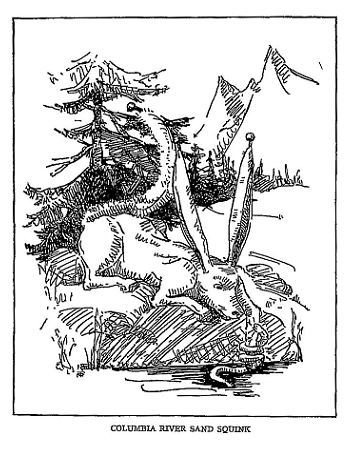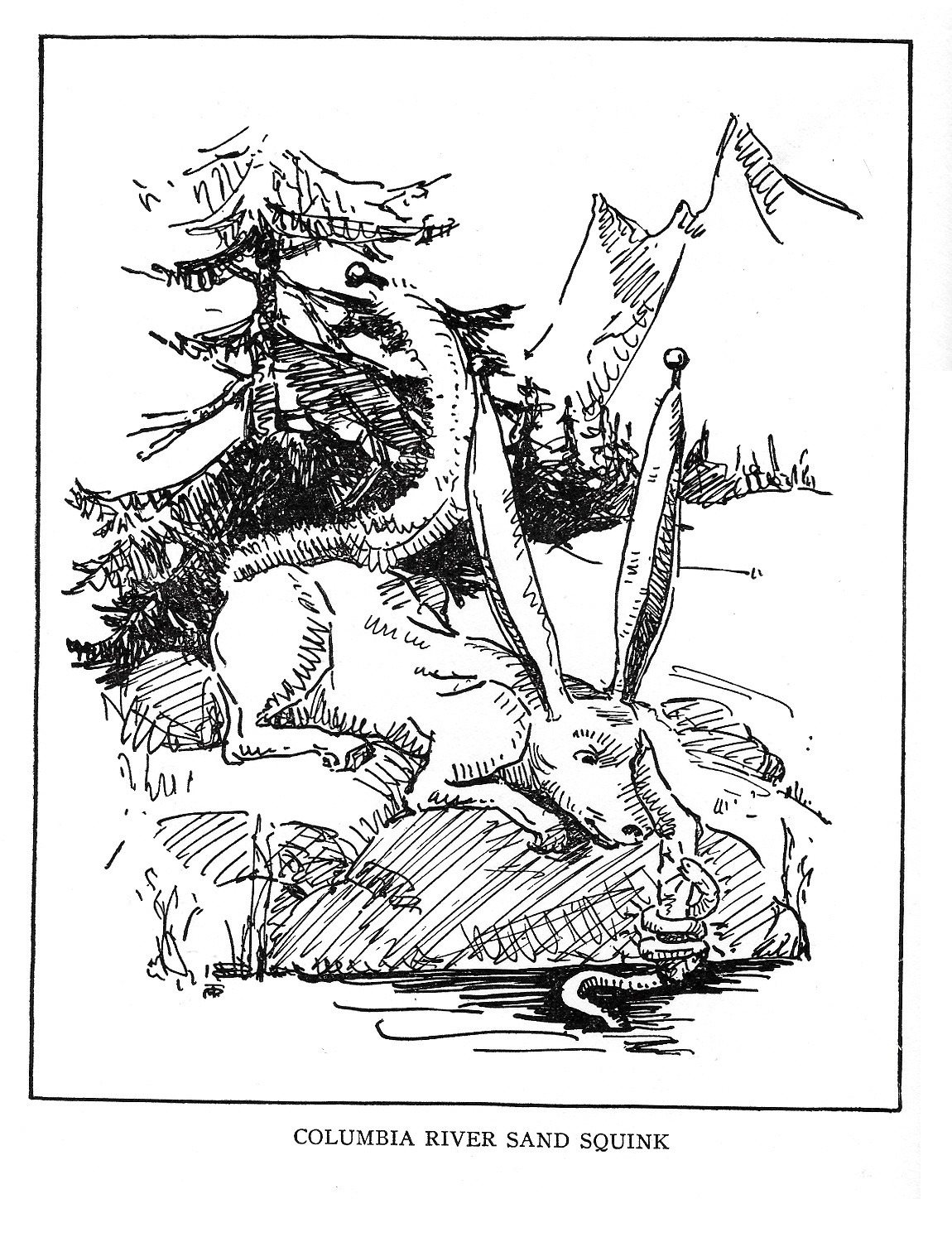
Anguillamvorax coruscens
Of limited distribution, but possessing most unusual characteristics. Reported to date only by prospectors, hunters and sheep-herders in the remote mountains of Washington. Built somewhat on the lines of a coyote, somewhat on the pattern of a bobcat, but with ears like a jack-rabbit. The tail is long and bushy, and is carried recurved along the back the same as a squirrel’s.
A nightly prowler. Emerges after dark and sinks down to the river to fish. The Squink isn’t particularly fussy about its diet, but has a great fondness for electric eels. Probably on account of their higher pH content. When hungry it is a timid animal. But its courage returns after feeding, and it will then stalk boldly along the mountain trails until it sights a prospector returning from town. Thereupon the Squink will precede its victim by two or three rods, slowly waving its long tail and touching one ear and then the other. The previous few miles of travel on a heavy feed of electric eels generates a substantial charge of static, and these alternating contacts produce a series of brilliant discharges which invariably please and attract the traveler, who follows and is never seen again.
Several nests of this animal have been located and carefully examined. They were all lined with portions of old inner tubes, while the eggs (for the Squink is oviparous1) were shelled with bakelite.2.
1: Meaning egg laying, the mammalian equivalent is called, monotremic.
2: A precursor to modern plastic.
[ 9 ]




